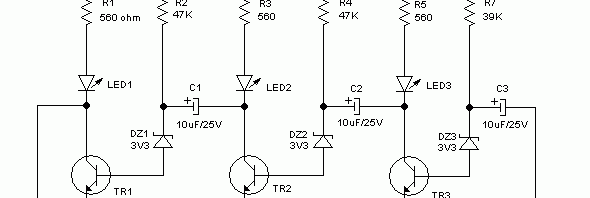Chasing Lights Controller Circuit Using Relays

Introduction to Chasing Light Running lights or chasing light is very attractive for advertisement display. A sequence of on-off at minimum three lamps gives an effect of moving lights. These three lamps then can be extended by paralleling the wire to give long bulbs chain. Modern lighting control system might have micro controller inside for complex lighting pattern, but here […]
Read more








